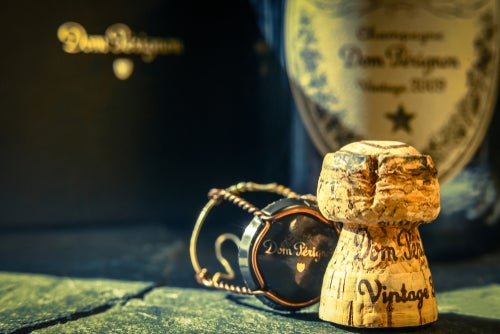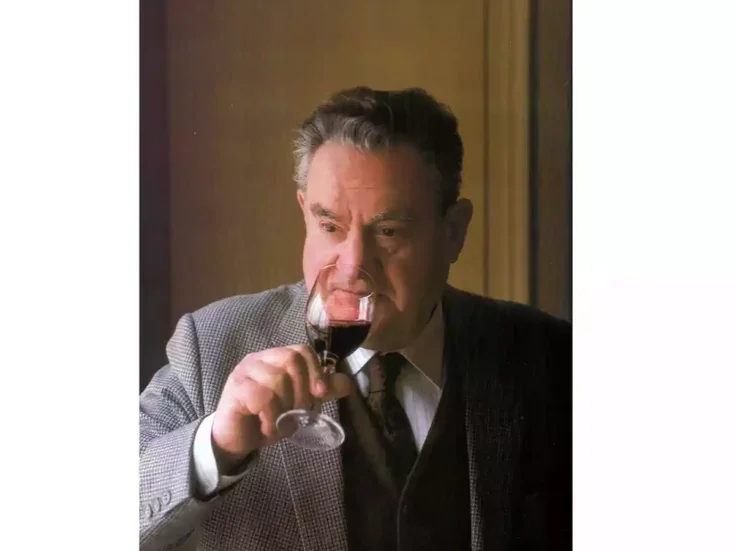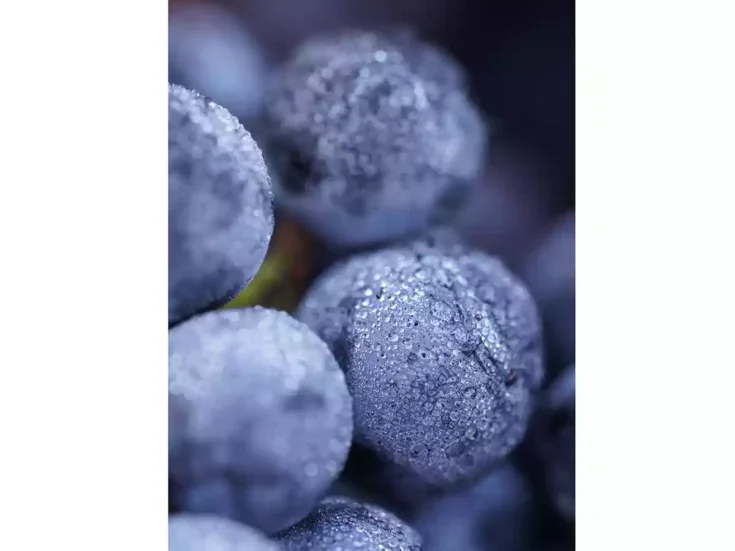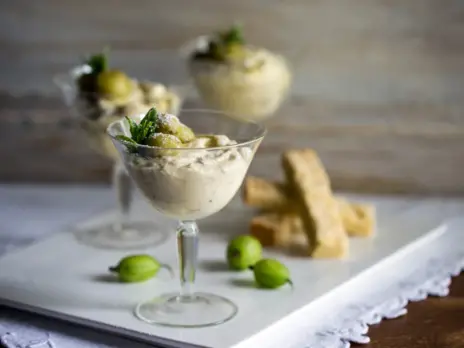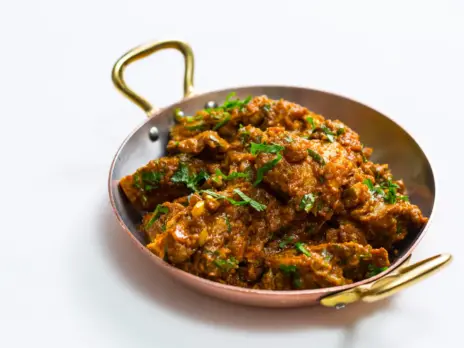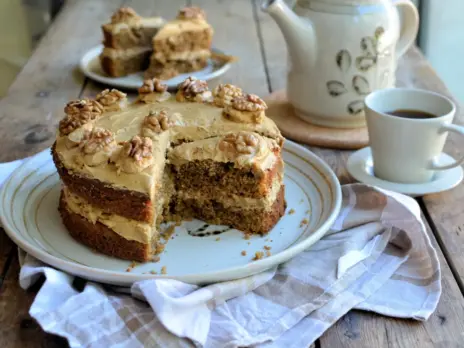
Note, you wine collectors with however many dozens or hundreds or thousands of bottles in your cellar (or tucked away in the cupboard under the stairs), note what Samuel Pepys had in his collection and feel, across some 460 years, a warm twinge of fellow feeling at his pleasure.
In his diary entry for July 7, 1665, Pepys reflects gratefully on “to what a condition it hath pleased God to bring me,” but he does so with something that seems more like pride and prospective sensual gratification than religious awe. He itemizes the following: “I have two tierces of Claret, two quarter casks of Canary, and a smaller vessel of Sack; a vessel of Tent, another of Malaga, and another of white wine, all in my wine cellar together.”
Quite apart from fellow feeling, if you can read that without a modicum of envy, without wishing that you could swop a case or two of your undoubtedly far superior modern wine for a quarter cask of Canary or a vessel of Tent (tent being deep red wine), you’re a more contented and less curious wine lover than I am.
Pepys’s serious wine collection dates back some three years before this and had grown. In June 1663 he apparently had only a single tierce of claret and grew “deadly mad” when he found that his cellar had been left unlocked for some time “and above half my wine drunk.” The first mention of his accumulating wine was in 1662—the second of the ten years during which Pepys, living and working in London, kept the vivid diary for which he has become much more famous than for his important work as an administrator (a kind of early civil servant) in the English Navy. Pepys was starting to acquire a decent middle-class income from the state—substantially supplemented by what we could call perks of the job if we generously eschew blunter words. On January 20, 1662, he reports visiting Mr Morrice, the wine cooper, with his partners in a purchase of “sherry from Cales”—that is, shipped from Cadiz. His portion “was put into a hogshead, and the vessel filled up with four gallons of Malaga wine.” It was, he says, “the first great quantity of wine that I ever bought.” But later that year, during one of the periods of rather effortful sobriety that punctuated his sensual life, he sold some of it to a colleague and then claimed to be “glad of my money instead of wine.”
What is perhaps most noticeable to us now in these accounts is the exclusive reference to various obscure casks. The tierce of claret is a third part of a pipe, making it equal to 42 US gallons (almost 159 liters—which is, incidentally, the officially defined volume of a barrel of crude oil today), and there are other barrels of various sizes. The “vessel of Tent” might have been the “Runlett of Tent” that Pepys refers to elsewhere, with a runlet, or roundlet, being a seventh of a butt, or a 14th of a tun, making it 21.6 US gallons (81.7 liters). Well, that’s according to one more or less contemporary definition. The Complete Dictionary of Arts and Sciences, an encyclopedia from a century later, defines it as “a small vessel containing an uncertain quantity of any liquor from three to twenty gallons.” The hogshead of Sherry and Malaga wine in Pepys’s cellar could have contained at least 62.4 US gallons (236.2 liters) in total.
But who’s counting? The more interesting observation of Pepys’s stocktaking is that there’s no mention of bottles in his 1665 cellar. In the mid-17th century, wine was generally sold by the barrel, of whatever shape or size, and purchasers would decant suitable quantities into their own bottles for service, ad hoc. (In grander establishments the decanting would be done by the “bottler,” who in time became the “butler.”) We are at this period, in fact, hovering on the crucial transition from medieval to modern wine storage. Glass bottles, deep-punted and bulbous, had already started making headway since their (re-)invention some 40 years earlier in England, but their irregular size meant that retailing wine by the bottle had been prohibited in 1638. Also, importantly, at this stage a really satisfactory way to stopper them was lacking. Glass stoppers (ground to fit the idiosyncratically sized bottle, bound with waxed linen, and tied to it with thread) were commonly used; cork was to become closer to standard only by the end of the 1600s; the first reported mention of a corkscrew is in 1681. Striking a modern note, however, there were from the start complaints about corks. A “Treatise on Cider” of 1676 spoke of “much liquor being absolutely spoiled through the only defect in the cork.”
Rich and fashionable wine lovers would have their crests embossed on their bottles—more akin to our conception of decanters, perhaps, in that they would be re-used many times. On a few occasions, and with much envy, Pepys had visited the cellar of one such person, Thomas Povy, at his house in Lincoln’s Inn Fields. But Povy seems to have used bottles for storage, too. The diary entry of January 19, 1663 records Pepys’s invitation to dinner there (“we did for prawns, swan, venison, after I had thought the dinner was quite done”). He was invited, “above all things,” to “go down into his wine-cellar, where upon several shelves there stood bottles of all sorts of wine, new and old, with labells pasted upon each bottle, and in the order and plenty as I never saw books in a bookseller’s shop; and herein, I observe, he puts his highest content.”
Later that year (September 4), Pepys was back at Povy’s, noting barrels as well as bottles: “After dinner done, to see his new cellars, which he has made so fine with so noble an arch and such contrivances for his barrels and bottles, and in a room next to it such a grotto and fountayne, which in summer will be so pleasant as nothing in the world can be almost.” Again sounding a note not entirely foreign to modern wine collectors, however, something like envy comes in, disguised as disapproval: “But to see how he himself do pride himself too much in it, and command and expect to have all admiration, though indeed everything do highly deserve it, is a little troublesome.”
The following month (October 23, 1663), Pepys writes of acquiring bottles for himself: “Thence to Mr Rawlinson’s and saw some of my new bottles made, with my crest upon them, filled with wine, about five or six dozen.” As with Povy’s collection, this large number of bottles does imply that already at this period some wine was being stored for at least the medium term (they would have needed to stand upright). And yet, inexplicably, Pepys does not mention bottles in his proud remarks of July 1665 on his cellar contents. He notes there, however, the following bit of pleasure at his substantial barrel holdings: “which, I believe, none of my friends of my name [his family] now alive ever had of his owne at one time.” Indeed, Pepys had risen from very modest conditions five years earlier to become the holder of this more than respectable wine collection.
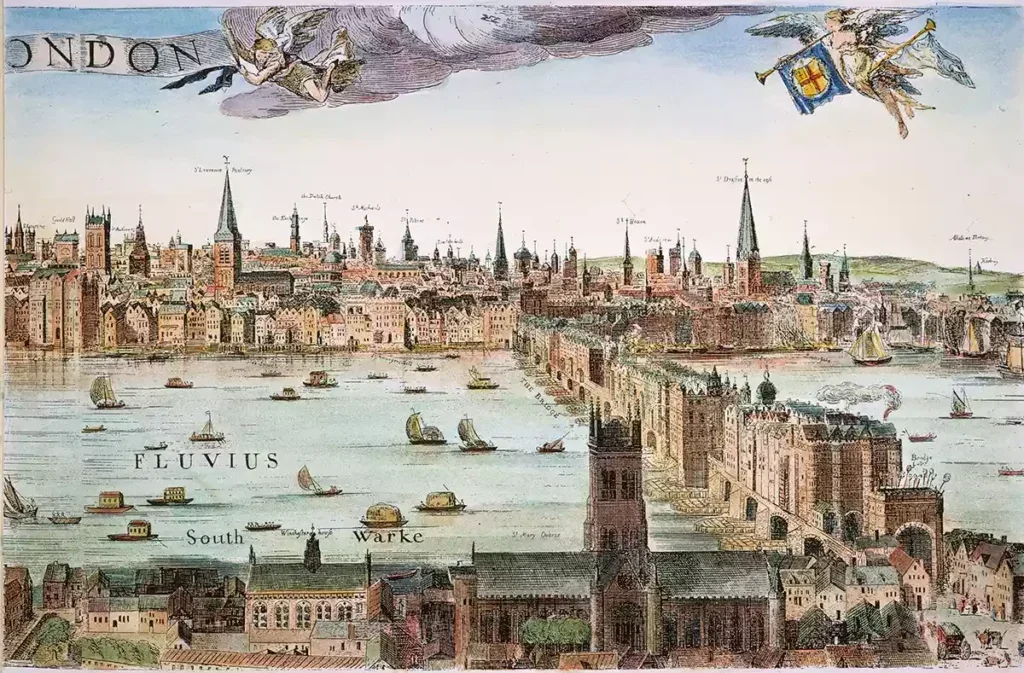
“Drinking of healths a great while”
There are long stretches in Pepys’s diary where there’s no mention of wine. Some of the gaps are ascribable to his periods of (often penitential) abstinence; others occur, no doubt, because there was simply nothing he thought worthy of recording alongside other accounts of the pleasures and vexations of his private and working lives—not to mention his reporting on the tumultuous events of the day. This was, after all, a most remarkably newsworthy decade in England, especially in London. Early diary entries tell of the restoration and return to England of King Charles II (as a child, Pepys may have been an observer at the execution of Charles I), while later entries record dissatisfaction at the king’s dissoluteness, as well as pleasure at the theater, which he had allowed to flourish once more. There are accounts of wars with the Dutch that saw action in the Thames, of the terrible plague outbreak of 1665, and of the more compressedly terrible Great Fire of the following year (“a most horrid malicious bloody flame”)—which had Pepys, distraught but alert to danger to property, hurriedly sending his “bags of gold” out of town, and burying for safety, in a pit he dug in his garden, “my Parmazan cheese, as well as my wine and some other things.”
Beyond the cellar notes already cited, however, references to wine in Pepys’s diary are many—his home consumption, as well as convivial visits to friends and to public taverns; perhaps the most frequently mentioned of the latter being Rhenish winehouses, which specialized in the wines of what is now Germany as well as of Alsace. On October 11, 1660, a typical entry records going “to the Rhenish wine house, where we sat drinking of healths a great while.” A month later (November 24), Pepys went again with colleagues, and “there I did give them two quarts of Wormwood wine”—not the only record of his drinking wine of vermouth type, perhaps for medicinal reasons (to aid in expelling worms; hence the names in both English and German). It was probably sweetened, too, with honey or sugar—a not uncommon practice with the many light, sourish wines of the time. On June 10, 1663, Pepys tells of buying sugar on his way to a tavern, “which we drank with wine,” and there are other references of the kind.
Little detail is given of all the Rhenish wines that Pepys drank. A curious note comes on June 19, 1663, when “we called for a red Rhenish wine called Bleahard, a pretty wine, and not mixed, as they say.” The wine was probably Bleichert, or Bleichart, which seems to have been at this time a term for the light red wines from the Ahr and Rhine (bleich meaning pale in German). Presumably Pepys’s note on its not being “mixed” suggests that a light red or rosé wine might often have been a blend of red and white.
Another generic wine name to which Pepys occasionally gives specification is sack. It’s sometimes warmed and spiced, as when, on March 5, 1668, Pepys “to comfort myself, did go to the Dog and drink half-a-pint of mulled sack”—the concoction’s generally comforting properties perhaps better established than its reputation as a remedy for a cold. Once, rather bizarrely, at “the Greyhound in Fleet Street,” he chose to accompany his sausages with “some raspberry sack”—presumably white wine and raspberry juice, and therefore at least somewhat sweet. It seems that sack refers to something a little wider than the Sherry with which it is nowadays most commonly associated in historical thinking—and, as in the account of his purchase, Pepys a few times specifically referred to Sherry by that name. “Sherris-sack” there certainly was, but also other dry, fortified Spanish white wines called sack, from Canary and Malaga.
Pepys had a fine example of this last version on July 20, 1663. He met his friend Captain Cocke “and so walked back again with him to his house, and there dined very finely. With much ado obtained an excuse from drinking of wine, and did only taste a drop of Sack which he had for his lady […] It was Malago Sack, which, he says, is certainly 30 years old, and I tasted a drop of it, and it was excellent wine, like a spirit rather than wine.” Pepys’s admirable restraint on this occasion is explained by the previous day’s diary entry: “so home to my office, and there read over my vows and increased them by a vow against all strong drink till November next of any sort or quantity.”
A possible reference to Sherry comes when Pepys and company visited the great port of Bristol on June 13, 1668. They were entertained by a merchant relation, who took them to his house “and did give us good entertainment of strawberries, a whole venison-pasty, cold, and plenty of brave wine, and above all Bristoll milk.” A contemporary, Thomas Fuller, wrote of “this metaphorical milk, whereby Xeres or Sherry Sack is intended,” but others used the name for a milky rum punch, or a celebrated “brewage” of Spanish wine. Pepys, unfortunately, tells us nothing more about what he drank that day.
The generic term for red Spanish wine, and probably for all darker reds from southern Europe, was tent (from tinto, dark-colored in Spanish)—perhaps to include the Navarre wine Pepys mentions, and even the “Florence wine,” possibly Chianti. A touch lighter in color was claret, by now firmly associated with red Bordeaux. One wonders longingly about his “drinking of some strange and incomparable good clarett of Mr. Rumball’s” (October 29, 1660).
As an aside, claret features in an odd Pepysian reference to the superstition that thunder can harm the quality of food and drink. On August 21, 1666, Pepys writes that a Mr Batelier told him “of his own knowledge, being with some others at Bourdeaux, making a bargain with another man at a taverne for some clarets, they did hire a fellow to thunder (which he had the art of doing upon a deale board) and to rain and hail, that is, make the noise of, so as did give them a pretence of undervaluing their merchants’ wines, by saying this thunder would spoil and turne them. Which was so reasonable to the merchant, that he did abate two pistolls per ton for the wine.”
The most famous reference to wine in the diary is also about Bordeaux. On April 10, 1663, Pepys wrote: “Off the Exchange with Sir J Cutler and Mr Grant to the Royall Oak Tavern, in Lumbard Street […] And here drank a sort of French wine, called Ho Bryan, that hath a good and most particular taste that I never met with.” This is not the first recorded mention of Château Haut-Brion. The wine is listed as Hobrionno in the royal cellar book of 1660, indicating how well reputed it already was by the time Pepys sampled it—though this was three years before owner Arnaud de Pontac sent his son to London to open an establishment, called Sign of Pontac’s Head, to market the wine. All this underlines how crucial a period this was in the making of modern wine, quite apart from the development of storage in bottles; Paul Lukacs in Inventing Wine argues that wine as we now understand it came about at this time, when the visionary Arnaud de Pontac began selling Haut-Brion as the product of a single domaine.
Strangely, given its place in Restoration England under a frivolous king, there’s no indication in the diary of Pepys drinking Champagne. In later writings and letters some mentions have been found, though, as when in March 1679, by now the proud possessor of a carriage of his own, he took a fashionable Sunday drive in it through Hyde Park—“the first time this year, taking two bottles of Champagne in my way.”
Closer to home, an entry in the diary that might surprise many enthusiasts of English wine since its revival in the mid-20th century was made on July 17, 1667, when “for joy he [Sir W Batten] did give the company […] a bottle or two of his own last year’s wine, growing at Walthamstow, then which the whole company said they never drank better foreign wine in their lives.” This was not the first time that Pepys had drunk wine from his fellow naval officer’s country estate; on December 13, 1660 he visited Lady Batten, “and there we dined and had very good red wine of my Lady’s own making in England.” He later described visiting Lord Salisbury’s vineyard at Hatfield House in Hertfordshire (“a very beautiful place”) and also visited vineyards at a stately house in Kent, at the great house of Audley End near Cambridge, and at Greenwich. English viticulture was scarcely viable by this time, long after its medieval heyday ended following the climate change of the 14th century; by the 17th century it seems to have been neither commercial nor monastic production, rather the hobby of a handful or two of rich noblemen.
To the diary’s, and the World’s, end
It must be said that—though Pepys struggled manfully to make and keep vows to avoid drink and theater-going—the dominant tone of his diary remains one of serious work coupled with joyful sensuality, the latter more culpable when it came to his many sexual infidelities and his often bullying relationships with women. He did try to keep to his periodic vows of abstinence but sometimes allowed himself to worm his way out, as on October 29, 1663 (“my Lord Mayor’s day”). While others were drinking wine, Pepys writes, “I only drinking some hypocras, which do not break my vowe, it being, to the best of my present judgement, only a mixed compound drink, and not any wine. If I am mistaken, God forgive me! but I hope and do think I am not.” It’s hard to think that God didn’t know as well as Pepys should have done that hypocras, or hippocras, was a venerable drink made from sweetened and spiced wine.
As to forgiveness, occasionally his body took its own vengeance when Pepys drank more than he probably should. And he does seem to have imbibed heavily during his non-abstinent times, often referring to drinking “a bottle or two of wine,” and to the likes of “great draughts of Clarret.” And at least as often he describes the consequences, with rueful notes like these: “To-day not well of my last night’s drinking yet”; “My brains somewhat troubled with so much wine”; “So to bed after drunk too much.”
The diary came to an end on May 31, 1669, with Pepys believing (wrongly, as it happened) that he was going blind and wanting to save his eyes as much as possible. The final entry concludes with a somber reflection on his abandoning the journal that he’d so assiduously maintained for nearly a decade—a closure he feels to be “almost as much as to see myself go into my grave.” But it’s good to note that that last entry, as well as including mentions of examining his accounts, of kissing a woman at a pub, and of meeting with the Duke of York on Navy business, also tells of going with his wife and a few friends “to The World’s End, a drinking-house by the Park; and there merry, and so home late.” It’s pretty certain it was wine that Pepys drank on the diary’s last reported outing.
A coda
Most of what we know about Pepys’s life comes from his great diary. There are other, later writings from the 30-plus years before his death in 1703 (including another but less personal and compelling journal), which contain little of relevance to us here. But there is matter in a letter of 1690 that a wine historian, especially a South African, is bound to notice, and to offer as a sort of coda to these musings about Pepys and wine.
On November 13, 1690, Pepys wrote to his friend John Evelyn, that other famous diarist of 17th-century England, and mentioned a dinner of exotic rarities given by a mutual friend, James Houblon, “where both hee and I dranke your health and earnestly wish’d you there, as believing the Meale would have pleas’d you noe less than it did mee, as hardly consisting of one dish or glass (besides bread and beere) of nearer growth than China, Persia and the Cape of Good Hope.”
This is, to my knowledge, the first written allusion in English (however oblique it may be) to wine from the Cape. For what could it have been other than wine that had been brought from the foot of Africa to a dining table in London at this time? The Dutch settler presence at the stormy Cape was less than half a century old, and the first Cape wine grapes had been pressed just 32 years before this dinner party took place. None of the settlement’s tiny production of wine was commercially available in London, or even Amsterdam, but Houblon was in a good position to have procured a bottle or flask of it to offer up as a curiosity to his guests along with other exotica. He was part of a family of leading international merchants and would have had plenty of contact with men in ships—including a brother involved in Dutch trade—in seeking something wildly foreign and rare with which to pique his guests’ interest.
Perhaps Houblon’s Cape wine (granting that that’s what it was) had first been taken to Amsterdam in an official capacity; or it could even have been collected in Batavia, the center of the Dutch East India Company’s trading network in Asia; or picked up in Cape Town by a traveler in a ship that had called in there. Anyway, somehow it got to Houblon’s table and Pepys’s glass. It was probably dreadful stuff, but Sam’s report would have been welcome.
Incidentally, Pepys does refer to the infant settlement in his diary on December 30, 1662, a mere decade after Jan van Riebeeck entered Table Bay. Again it is a report of a dinner party, which included two East India Company officers: “With the officers I had good discourse, particularly of the people at the Cape of Good Hope, of whom they of their own knowledge do tell me these one or two things: viz. that when they come to age, the men do cut off one of the stones of each other, which they hold doth help them to get children the better and to grow fat. That they never sleep lying, but always sitting upon the ground, that their speech is not so articulate as ours, but yet [they] understand one another well, that they paint themselves all over with the grease the Dutch sell them (who have a fort there) and soot.”
The tall tales of travelers came back to the curious in England those long centuries ago, along with other exotic souvenirs, like wine.

